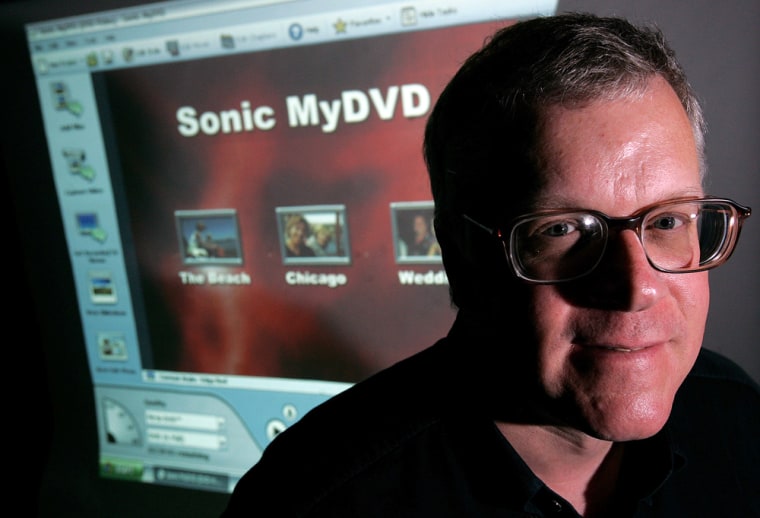After filming the first "Star Wars" movie with special effects far from special, George Lucas spent millions to develop a complete digital editing system to populate his sequels with armies of X-wing fighters and Gungan warriors. Then, he virtually gave it away.
"We were 10 years ahead of the commercial reality," said Bob Doris, co-general manager of Lucas' computer division during the mid-1980s. "He inspired some very worthwhile ventures ... but the innovations weren't close to paying for themselves."
So Lucas sold many of his technologies for cheap — technologies that would later appear in home stereos, cell phones, medical imaging devices and virtually every Hollywood studio, driving billion-dollar companies and employing thousands of people.
Apple Computer Inc. chief executive Steve Jobs paid $10 million for the team that became Pixar Inc., and the movie company went on to make $3 billion at the box office.
And so it goes with Lucas, who was famous for saying "I'm not a venture capitalist."
Lucas recognized the absurdity of his situation as he made the first "Star Wars" movie. There he was trying to tell a futuristic story about intergalactic revolution, space travel and androids, and Hollywood was stuck using 50-year-old film-making techniques.
To create space ships or alien creatures, his artists built small models and hoped for audiences with vivid imaginations. The first "Death Star" was made out of plastic.
Lucas aspired for something much more grand, and after the first movie was released in 1977, he gathered a small group of computer artists and told them to spare no expense in creating a system that would include software capable of rendering images in three dimensions.
First digital-editing system
First, the computer team created "EditDroid," the first digital-editing system. It allowed movies to be transferred to computer disks so editors won't have to fiddle with cumbersome film reels. Lucas sold that technology to Avid Technology Inc., which went on to sell the forerunner of modern movie-editing bays.
Then he sold the computer division — later to become Pixar — to Jobs in 1986 in arguably one of the worst deals in movie history.
Using talent and technology that Lucas had let go, Pixar developed RenderMan, the software that has since transformed the film industry by infusing computer images with real-world qualities, such as shadows, glossy reflections, motion-blur and depth of field.
Emeryville-based Pixar used RenderMan in 1995 to release the first entirely computer-animated film, "Toy Story," and then five more hits.
Other studios used RenderMan or software inspired by it to make the form-changing cyborg in "Terminator 2," the massive waves in "The Perfect Storm" and even the computer-generated smoke and fire in the final installment of the six-film "Star Wars" saga, "Revenge of the Sith," which debuts May 19.
In all, the software has helped studios win 33 of the past 35 Academy Awards for special-effects.
Good reason
But Lucas — already financially secure because he owned the "Star Wars" franchise — had good reason for unloading some of the technology. Most of the editing and production tools were so advanced that there was little market for them at the time.
Also, he wasn't motivated by profits — he just wanted to make better films, said Doris, who left with three other Lucas staffers in 1986 to form Sonic Solutions, which makes DVD-creation software.
In fact, dozens of groundbreaking technologies were initially developed at Lucasfilm Ltd.'s San Rafael headquarters, known as Skywalker Ranch.
"Half the technology companies here are spinoffs" of a Lucas' company, said Robert Huebener, a former LucasArts videogame developer who in 1998 founded a competing firm in nearby Redwood City.
Perhaps not half, but the list of companies that in one way or another got their start at Skywalker Ranch is long.
Besides the Lucasfilm divisions Industrial Light & Magic for special effects, Lucasfilm for movie production, Skywalker Sound for audio post-production and LucasArts for video games, Lucas inspired Pixar, Avid and Sonic Solutions.
Other spinoffs include visual effects developer Visual Concept Entertainment, production studio Digital Domain and video game software companies BioWare and Nihilistic Software, to name a few.
Some of those companies found other applications for the technology developed at Skywalker Ranch.
THX, the theater sound system developed in 1983 and rolled out to more than 2,000 theaters across the country, is now in car and home stereo systems. Sound effects designed by Skywalker Sound's Gary Rydstrom are available on Apple computers. Before Pixar became a powerhouse in animated-movie making, the company sold computers that helped doctors create digital three-dimensional models.
Lucas may not have profited from this galaxy of businesses, but he's earned lasting respect and gratitude from his fans as well as many in the movie industry, said BZ Petroff, who oversees production at San Francisco's Wild Brain Inc. animation studio.
"Back in 1980s you'd have a director of photography on a crane performing incredibly complex and long camera moves going through these miniature sets," Petroff said. "Now, you have a 25-year-old getting the same shots on his computer."
Special effects had fallen out of favor in the 1970s when Lucas began the "Star Wars" saga, Lucas recalled as he promoted his final "Star Wars" movie last week. Some studios had dismantled their special-effects departments entirely.
"I'm most proud," Lucas said, "of the fact that I was able to take special effects out of the cellar."
